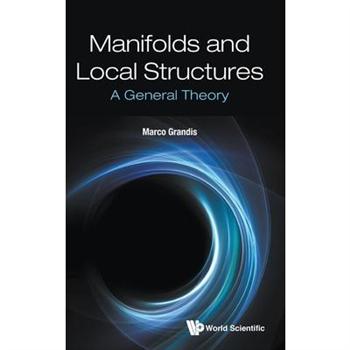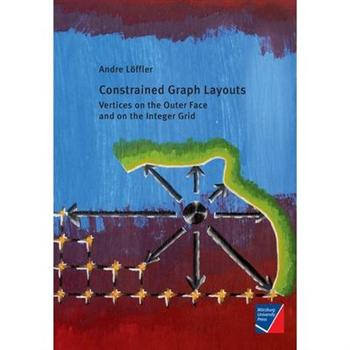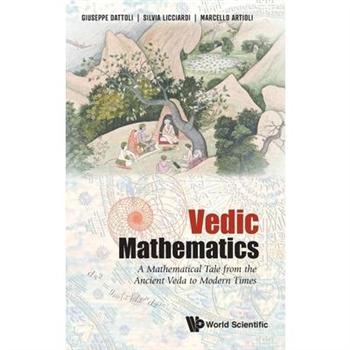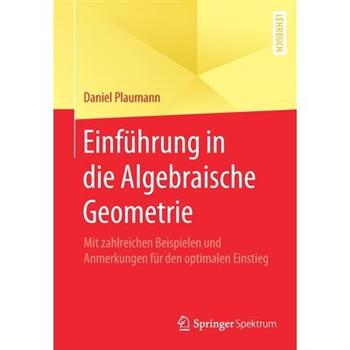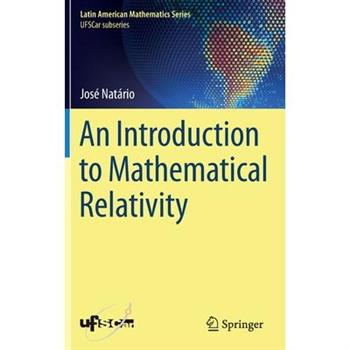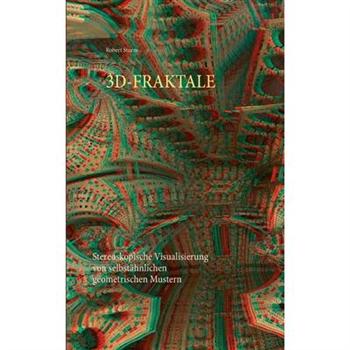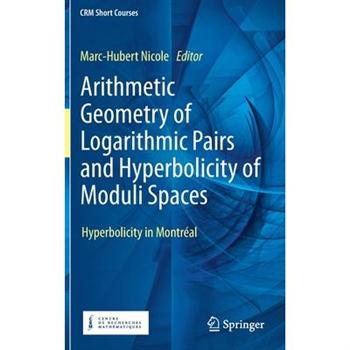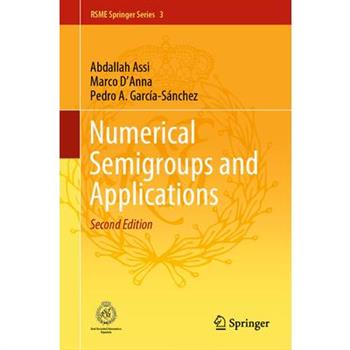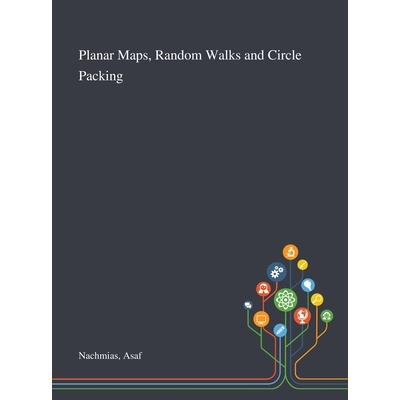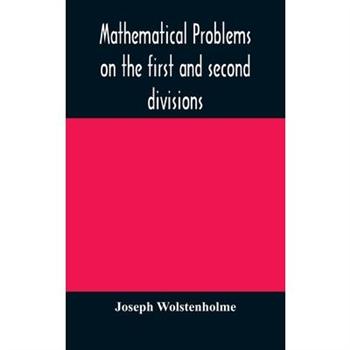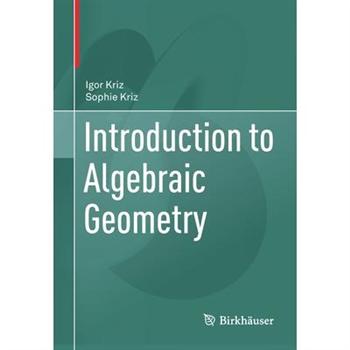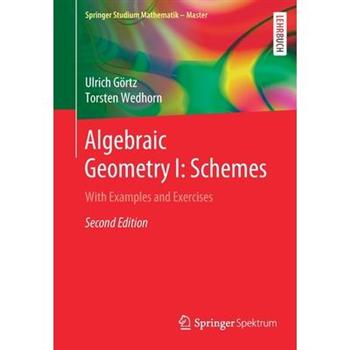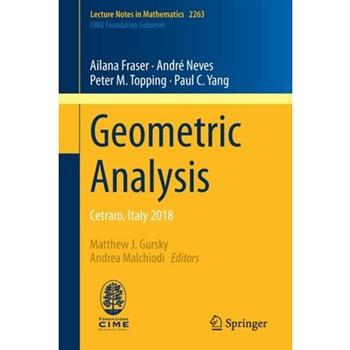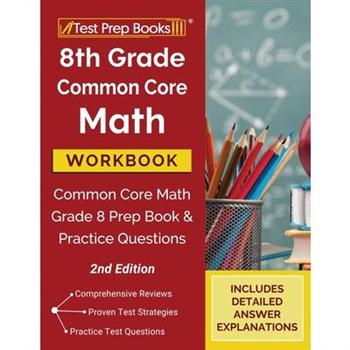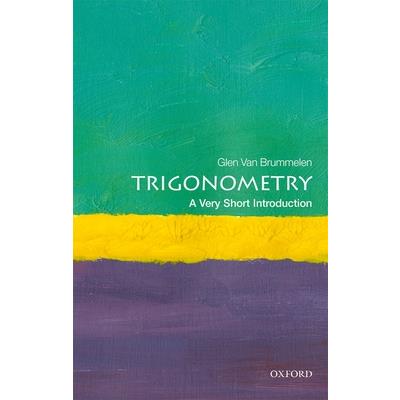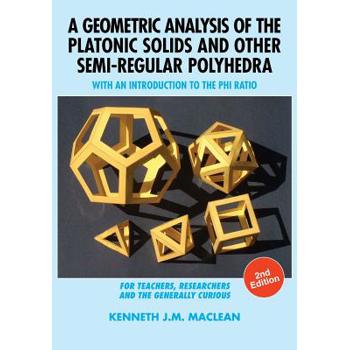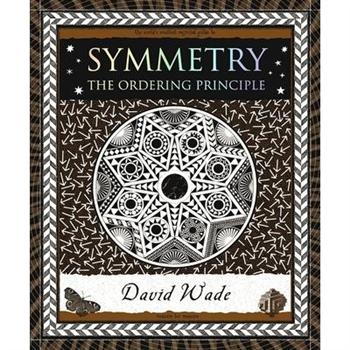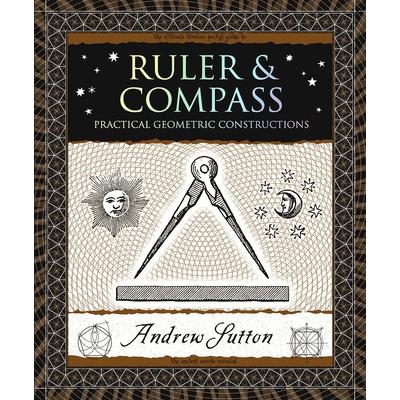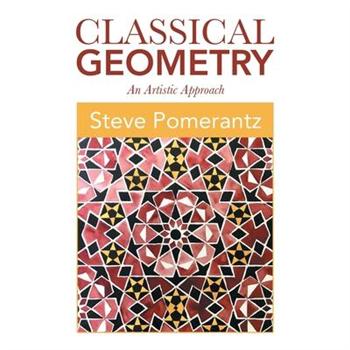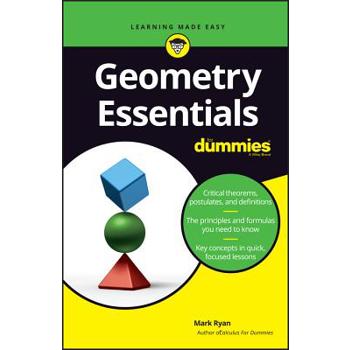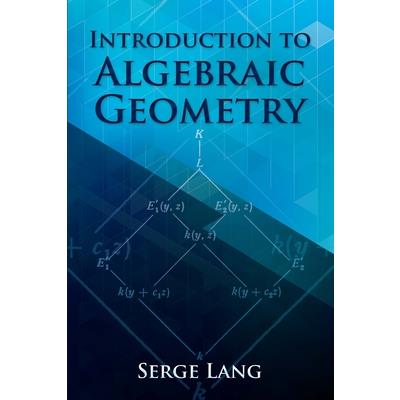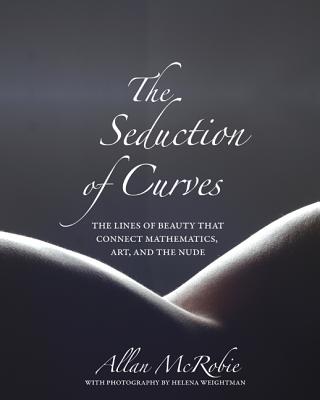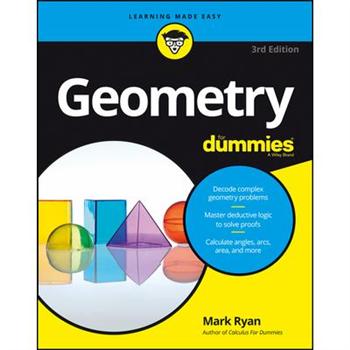Manifolds and Local Structures
Local structures, like differentiable manifolds, fibre bundles, vector bundles and foliations, can be obtained by gluing together a family of suitable 'elementary spaces', by means of partial homeomorphisms that fix the gluing conditions and form a sort of 'intrinsic atlas', instead of the more usual system of charts living in an external framework.An 'intrinsic manifold' is defined here as such an atlas, in a suitable category of elementary spaces: open euclidean spaces, or trivial bundles, or trivial vector bundles, and so on.This uniform approach allows us to move from one basis to another: for instance, the elementary tangent bundle of an open Euclidean space is automatically extended to the tangent bundle of any differentiable manifold. The same holds for tensor calculus.Technically, the goal of this book is to treat these structures as 'symmetric enriched categories' over a suitable basis, generally an ordered category of partial mappings.This approach to gluing structures is related to Ehresmann's one, based on inductive pseudogroups and inductive categories. A second source was the theory of enriched categories and Lawvere's unusual view of interesting mathematical structures as categories enriched over a suitable basis.
Analysis and Beyond: An Introduction with Examples and Exercises
This volume aims to bridge between elementary textbooks on calculus and established books on advanced analysis. It provides elucidation of the reversible process of differentiation and integration through two featured principles: the chain rule and its inverse -- the change of variable -- as well as the Leibniz rule and its inverse -- the integration by parts. The chain rule or differentiation of composite functions is ubiquitous since almost all (a.a.) functions are composite functions of (elementary) functions and with the change of variable method as its reverse process. The Leibniz rule or differentiation of the product of two functions is essential since it makes differentiation nonlinear and with the method of integration by parts as its reverse process.Readers will find numerous worked-out examples and exercises in this volume. Detailed solutions are provided for most of the common exercises so that readers remain enthusiastically motivated in solving and understanding the concepts better.The intention of this volume is to lead the reader into the rich fields of advanced analysis and to obtain a much better view of useful mathematics.
Klassifizieren, Sch瓣tzen, Zeichnen und Messen verschiedener Winkel. Eine Lerntheke zur F繹rderung selbstregulierten und selbstst瓣ndigen Arbeitens in einer 5. Klasse
Examensarbeit aus dem Jahr 2020 im Fachbereich Didaktik - Mathematik, Note: 1,75, Veranstaltung: Hausarbeit im Rahmen des Referendariats, Sprache: Deutsch, Abstract: Diese Arbeit stellt eine Lerntheke zum Thema Winkel f羹r eine f羹nfte Klasse vor. Die Sch羹lerinnen und Sch羹ler sollen ihre Kompetenz im Sch瓣tzen, Benennen und Messen eines Winkels vertiefen. Dabei sollen sie ihren richtigen Umgang mit dem Geodreieck weiter vertiefen. Indem die Sch羹lerinnen und Sch羹ler selbstst瓣ndig verschiedene Stationen bearbeiten und hierzu eine R羹ckmeldung anfertigen, k繹nnen sie ihre Methodenkompetenz st瓣rken. Die Fachanforderungen f羹r das Fach Mathematik sehen f羹r die f羹nfte und sechste Klassenstufe das Thema "Kreis und Winkel" vor. Eine genaue Zuordnung erfolgt in den Bereich der Leitidee Messen und der Leitidee Raum und Form. Hierzu sind bestimmte Kenntnisse sowie fachliche Anforderungen der Messung, Sch瓣tzung und Zeichnung der Winkel und der Gr繹?en an die SuS zu beachten. Die Einf羹hrung des Winkelbegriffes kann 羹ber den statischen und dynamischen Winkelbegriff erfolgen, der sachgerechte Umgang mit dem Geodreieck zum Messen und Zeichnen der Objekte ist in diesem Bereich ebenso immanent. Eine weitere Einordnung erfolgt im Bereich der Leitidee Raum und Form.
Constrained Graph Layouts
Constraining graph layouts - that is, restricting the placement of vertices and the routing of edges to obey certain constraints - is common practice in graph drawing. In this book, we discuss algorithmic results on two different restriction types: placing vertices on the outer face and on the integer grid. For the first type, we look into the outer k-planar and outer k-quasi-planar graphs, as well as giving a linear-time algorithm to recognize full and closed outer k-planar graphs Monadic Second-order Logic. For the second type, we consider the problem of transferring a given planar drawing onto the integer grid while perserving the original drawings topology; we also generalize a variant of Cauchy's rigidity theorem for orthogonal polyhedra of genus 0 to those of arbitrary genus.
Introduction to Lipschitz Geometry of Singularities
This book presents a broad overview of the important recent progress which led to the emergence of new ideas in Lipschitz geometry and singularities, and started to build bridges to several major areas of singularity theory. Providing all the necessary background in a series of introductory lectures, it also contains Pham and Teissier's previously unpublished pioneering work on the Lipschitz classification of germs of plane complex algebraic curves. While a real or complex algebraic variety is topologically locally conical, it is in general not metrically conical; there are parts of its link with non-trivial topology which shrink faster than linearly when approaching the special point. The essence of the Lipschitz geometry of singularities is captured by the problem of building classifications of the germs up to local bi-Lipschitz homeomorphism. The Lipschitz geometry of a singular space germ is then its equivalence class in this category. The book is aimedat graduate students and researchers from other fields of geometry who are interested in studying the multiple open questions offered by this new subject.
Vedic Mathematics: A Mathematics Tale from the Ancient Veda to Modern Times
This is a book about Mathematics but not a book of Mathematics. It is an attempt, between the serious and facetious, of conveying the idea that a mathematical thought is the result of different experiences, geographical and social factors. Even though it is not clear when Mathematics had started, it is evident that it had been used at an early stage of human history and by ancient Babylonians and Egyptians who have already developed a sophisticated corpus of mathematical items, which were the workhorse tools in engineering, navigation, trades and astronomy. The book sweeps across the mathematical minds of the Greek and Arab traditions, concepts by Assyro-Babylonians, and ancient Indian Vedic culture. The mathematical mind has modeled the evolution of societies and has been modeled by it. It is now in the midst of a great revolution and it is not clear where it will bring us. The current new epoch needs new mathematical tools and, above this, a new way of looking at Mathematics. This book tells the tale of what went on and what might go on.
Rules and Examples of Perspective Proper for Painters and Architects
Rules and Examples of Perspective Proper for Painters and Architects - in English and Latin: containing a most easie and expeditious method to delineate in perspective all designs relating to architecture is an unchanged, high-quality reprint of the original edition of 1693. Hansebooks is editor of the literature on different topic areas such as research and science, travel and expeditions, cooking and nutrition, medicine, and other genres. As a publisher we focus on the preservation of historical literature. Many works of historical writers and scientists are available today as antiques only. Hansebooks newly publishes these books and contributes to the preservation of literature which has become rare and historical knowledge for the future.
Metacyclic Groups and the D(2) Problem
The D(2) problem is a fundamental problem in low dimensional topology. In broad terms, it asks when a three-dimensional space can be continuously deformed into a two-dimensional space without changing the essential algebraic properties of the spaces involved.The problem is parametrized by the fundamental group of the spaces involved; that is, each group G has its own D(2) problem whose difficulty varies considerably with the individual nature of G.This book solves the D(2) problem for a large, possibly infinite, number of finite metacyclic groups G(p, q). Prior to this the author had solved the D(2) problem for the groups G(p, 2). However, for q > 2, the only previously known solutions were for the groups G(7, 3), G(5, 4) and G(7, 6), all done by difficult direct calculation by two of the author's students, Jonathan Remez (2011) and Jason Vittis (2019).The method employed is heavily algebraic and involves precise analysis of the integral representation theory of G(p, q). Some noteworthy features are a new cancellation theory of modules (Chapters 10 and 11) and a simplified treatment (Chapters 5 and 12) of the author's theory of Swan homomorphisms.
Einf羹hrung in Die Algebraische Geometrie
Die algebraische Geometrie ist eines der gro?en aktuellen Forschungsgebiete der Mathematik und hat sich in verschiedene Richtungen und in die Anwendungen hinein verzweigt. Ihre grundlegenden Ideen sind aber bereits im Anschluss an die Algebra-Vorlesung gut zug瓣nglich und stellen f羹r viele weitere Vertiefungsrichtungen eine Bereicherung dar. Diese Einf羹hrung baut deshalb auf der Algebra auf und richtet sich an Bachelor- und Master-Studierende etwa ab dem f羹nften Semester. Die geometrischen Begriffe werden erst nah an der Algebra eingef羹hrt - illustriert durch viele Beispiele. Anschlie?end werden sie auf die projektive Geometrie 羹bertragen und weiterentwickelt. Auch weiterf羹hrende Konzepte aus der kommutativen Algebra und die Grundlagen der Computer-Algebra kommen dabei zum Tragen, ohne die technischen Anforderungen zu hoch zu schrauben.Der AutorDaniel Plaumann ist seit 2016 Professor f羹r Algebra und ihre Anwendungen an der TU Dortmund. Sein Forschungsgebiet ist die reelle algebraische Geometrie.
Greek Geometry From Thales To Euclid
This book has been considered by academicians and scholars of great significance and value to literature. This forms a part of the knowledge base for future generations. So that the book is never forgotten we have represented this book in a print format as the same form as it was originally first published. Hence any marks or annotations seen are left intentionally to preserve its true nature.
Global Nonlinear Stability of Schwarzschild Spacetime Under Polarized Perturbations
Essential mathematical insights into one of the most important and challenging open problems in general relativity-the stability of black holes One of the major outstanding questions about black holes is whether they remain stable when subject to small perturbations. An affirmative answer to this question would provide strong theoretical support for the physical reality of black holes. In this book, Sergiu Klainerman and J矇r矇mie Szeftel take a first important step toward solving the fundamental black hole stability problem in general relativity by establishing the stability of nonrotating black holes-or Schwarzschild spacetimes-under so-called polarized perturbations. This restriction ensures that the final state of evolution is itself a Schwarzschild space. Building on the remarkable advances made in the past fifteen years in establishing quantitative linear stability, Klainerman and Szeftel introduce a series of new ideas to deal with the strongly nonlinear, covariant features of the Einstein equations. Most preeminent among them is the general covariant modulation (GCM) procedure that allows them to determine the center of mass frame and the mass of the final black hole state. Essential reading for mathematicians and physicists alike, this book introduces a rich theoretical framework relevant to situations such as the full setting of the Kerr stability conjecture.
An Introduction to Mathematical Relativity
This concise textbook introduces the reader to advanced mathematical aspects of general relativity, covering topics like Penrose diagrams, causality theory, singularity theorems, the Cauchy problem for the Einstein equations, the positive mass theorem, and the laws of black hole thermodynamics. It emerged from lecture notes originally conceived for a one-semester course in Mathematical Relativity which has been taught at the Instituto Superior T矇cnico (University of Lisbon, Portugal) since 2010 to Masters and Doctorate students in Mathematics and Physics. Mostly self-contained, and mathematically rigorous, this book can be appealing to graduate students in Mathematics or Physics seeking specialization in general relativity, geometry or partial differential equations. Prerequisites include proficiency in differential geometry and the basic principles of relativity. Readers who are familiar with special relativity and have taken a course either inRiemannian geometry (for students of Mathematics) or in general relativity (for those in Physics) can benefit from this book.
3d-Fraktale
Fraktale Geometrie und Chaostheorie gelten seit den 1970er Jahren als zentrale Forschungsgebiete der Mathematik und haben bereits zahlreiche Anwendungsbereiche in Naturwissenschaften und Technik gefunden. Die zumeist auf relativ einfachen mathematischen Gesetzm瓣?igkeiten beruhenden fraktalen Gebilde lassen sich sowohl in der zweidimensionalen Ebene als auch im dreidimensionalen Raum entwickeln, wodurch sie f羹r die stereoskopische Visualisierung zu interessanten Untersuchungsobjekten geraten. Das vorliegende Buch gibt einen kurzen ?berblick 羹ber das allgemeine Wesen der Fraktalgeometrie und lenkt sein Augenmerk in weiterer Folge auf die 3D-Darstellung fraktaler Strukturen aller Art, wobei hier zahlreiche Bildbeispiele zur Pr瓣sentation gelangen.
Arithmetic Geometry of Logarithmic Pairs and Hyperbolicity of Moduli Spaces
This textbook introduces exciting new developments and cutting-edge results on the theme of hyperbolicity. Written by leading experts in their respective fields, the chapters stem from mini-courses given alongside three workshops that took place in Montr矇al between 2018 and 2019. Each chapter is self-contained, including an overview of preliminaries for each respective topic. This approach captures the spirit of the original lectures, which prepared graduate students and those new to the field for the technical talks in the program. The four chapters turn the spotlight on the following pivotal themes: The basic notions of o-minimal geometry, which build to the proof of the Ax-Schanuel conjecture for variations of Hodge structures;A broad introduction to the theory of orbifold pairs and Campana's conjectures, with a special emphasis on the arithmetic perspective;A systematic presentation and comparison between different notions of hyperbolicity, as an introduction to the Lang-Vojta conjectures in the projective case;An exploration of hyperbolicity and the Lang-Vojta conjectures in the general case of quasi-projective varieties.Arithmetic Geometry of Logarithmic Pairs and Hyperbolicity of Moduli Spaces is an ideal resource for graduate students and researchers in number theory, complex algebraic geometry, and arithmetic geometry. A basic course in algebraic geometry is assumed, along with some familiarity with the vocabulary of algebraic number theory.
The Theory of Quantum Torus Knots
The mathematical building block presented in the four-volume set is called the theory of quantum torus knots (QTK), a theory that is anchored in the principles of differential geometry and 2D Riemannian manifolds for 3D curved surfaces. The reader is given a mathematical setting from which they will be able to witness the derivations, solutions, and interrelationships between theories and equations taken from classical and modern physics. Included are the equations of Ginzburg-Landau, Gross-Pitaevskii, Kortewig-de Vries, Landau-Lifshitz, nonlinear Schr繹dinger, Schr繹dinger-Ginzburg-Landau, Maxwell, Navier-Stokes, and Sine-Gordon. They are applied to the fields of aerodynamics, electromagnetics, hydrodynamics, quantum mechanics, and superfluidity. These will be utilized to elucidate discussions and examples involving longitudinal and transverse waves, convected waves, solitons, special relativity, torus knots, and vortices.
An Introduction to Tensor Analysis
The subject of Tensor Analysis deals with the problem of the formulation of the relation between various entities in forms which remain invariant when we pass from one system of coordinates to another. The invariant form of equation is necessarily related to the possible system of coordinates with reference to which the equation remains invariant. The primary purpose of this book is the study of the invariance form of equation relative to the totally of the rectangular co-ordinate system in the three-dimensional Euclidean space. We start with the consideration of the way the sets representing various entities are transformed when we pass from one system of rectangular co-ordinates to another. A Tensor may be a physical entity that can be described as a Tensor only with respect to the manner of its representation by means of multi-sux sets associated with different system of axes such that the sets associated with different system of co-ordinate obey the transformation law for Tensor. We have employed sux notation for tensors of any order, we could also employ single letter such A, B to denote Tensors.
Planar Maps, Random Walks and Circle Packing
This open access book focuses on the interplay between random walks on planar maps and Koebe's circle packing theorem. Further topics covered include electric networks, the He-Schramm theorem on infinite circle packings, uniform spanning trees of planar maps, local limits of finite planar maps and the almost sure recurrence of simple random walks on these limits. One of its main goals is to present a self-contained proof that the uniform infinite planar triangulation (UIPT) is almost surely recurrent. Full proofs of all statements are provided. A planar map is a graph that can be drawn in the plane without crossing edges, together with a specification of the cyclic ordering of the edges incident to each vertex. One widely applicable method of drawing planar graphs is given by Koebe's circle packing theorem (1936). Various geometric properties of these drawings, such as existence of accumulation points and bounds on the radii, encode important probabilistic information, such as the recurrence/transience of simple random walks and connectivity of the uniform spanning forest. This deep connection is especially fruitful to the study of random planar maps. The book is aimed at researchers and graduate students in mathematics and is suitable for a single-semester course; only a basic knowledge of graduate level probability theory is assumed. This work was published by Saint Philip Street Press pursuant to a Creative Commons license permitting commercial use. All rights not granted by the work's license are retained by the author or authors.
Mathematical problems on the first and second divisions of the schedule of subjects for the Cambridge mathematical tripos examination Devised and Arranged
This book has been considered by academicians and scholars of great significance and value to literature. This forms a part of the knowledge base for future generations. So that the book is never forgotten we have represented this book in a print format as the same form as it was originally first published. Hence any marks or annotations seen are left intentionally to preserve its true nature.
Mathematical problems on the first and second divisions of the schedule of subjects for the Cambridge mathematical tripos examination Devised and Arranged
This book has been considered by academicians and scholars of great significance and value to literature. This forms a part of the knowledge base for future generations. So that the book is never forgotten we have represented this book in a print format as the same form as it was originally first published. Hence any marks or annotations seen are left intentionally to preserve its true nature.
Kuranishi Structures and Virtual Fundamental Chains
The package of Gromov's pseudo-holomorphic curves is a major tool in global symplectic geometry and its applications, including mirror symmetry and Hamiltonian dynamics. The Kuranishi structure was introduced by two of the authors of the present volume in the mid-1990s to apply this machinery on general symplectic manifolds without assuming any specific restrictions. It was further amplified by this book's authors in their monograph Lagrangian Intersection Floer Theory and in many other publications of theirs and others. Answering popular demand, the authors now present the current book, in which they provide a detailed, self-contained explanation of the theory of Kuranishi structures.Part I discusses the theory on a single space equipped with Kuranishi structure, called a K-space, and its relevant basic package. First, the definition of a K-space and maps to the standard manifold are provided. Definitions are given for fiber products, differential forms, partitions of unity, and the notion of CF-perturbations on the K-space. Then, using CF-perturbations, the authors define the integration on K-space and the push-forward of differential forms, and generalize Stokes' formula and Fubini's theorem in this framework. Also, "virtual fundamental class" is defined, and its cobordism invariance is proved.Part II discusses the (compatible) system of K-spaces and the process of going from "geometry" to "homological algebra". Thorough explanations of the extension of given perturbations on the boundary to the interior are presented. Also explained is the process of taking the "homotopy limit" needed to handle a system of infinitely many moduli spaces. Having in mind the future application of these chain level constructions beyond those already known, an axiomatic approach is taken by listing the properties of the system of the relevant moduli spaces and then a self-contained account of the construction of the associated algebraic structures is given. This axiomatic approach makes the exposition contained here independent of previously published construction of relevant structures.
Introduction to Algebraic Geometry
The goal of this book is to provide an introduction to algebraic geometry accessible to students. Starting from solutions of polynomial equations, modern tools of the subject soon appear, motivated by how they improve our understanding of geometrical concepts. In many places, analogies and differences with related mathematical areas are explained. The text approaches foundations of algebraic geometry in a complete and self-contained way, also covering the underlying algebra. The last two chapters include a comprehensive treatment of cohomology and discuss some of its applications in algebraic geometry.
Algebraic Geometry I: Schemes
This book introduces the reader to modern algebraic geometry. It presents Grothendieck's technically demanding language of schemes that is the basis of the most important developments in the last fifty years within this area. A systematic treatment and motivation of the theory is emphasized, using concrete examples to illustrate its usefulness. Several examples from the realm of Hilbert modular surfaces and of determinantal varieties are used methodically to discuss the covered techniques. Thus the reader experiences that the further development of the theory yields an ever better understanding of these fascinating objects. The text is complemented by many exercises that serve to check the comprehension of the text, treat further examples, or give an outlook on further results. The volume at hand is an introduction to schemes. To get started, it requires only basic knowledge in abstract algebra and topology. Essential facts from commutative algebra are assembled in an appendix. It will be complemented by a second volume on the cohomology of schemes. For the second edition, several mistakes and many smaller errors and misprints have been corrected.
Lectures on Convex Geometry
This book provides a self-contained introduction to convex geometry in Euclidean space. After covering the basic concepts and results, it develops Brunn-Minkowski theory, with an exposition of mixed volumes, the Brunn-Minkowski inequality, and some of its consequences, including the isoperimetric inequality. Further central topics are then treated, such as surface area measures, projection functions, zonoids, and geometric valuations. Finally, an introduction to integral-geometric formulas in Euclidean space is provided. The numerous exercises and the supplementary material at the end of each section form an essential part of the book. Convexity is an elementary and natural concept. It plays a key role in many mathematical fields, including functional analysis, optimization, probability theory, and stochastic geometry. Paving the way to the more advanced and specialized literature, the material will be accessible to students in the third year and can be covered in one semester.
Polynomial Automorphisms and the Jacobian Conjecture
- The Shestakov-Umirbaev Theory and Nagata's Conjecture. - Counterexamples to Hilbert's Fourteenth Problem. - Prime Characteristic Methods and the Cancellation Problem. - The Jacobian Conjecture: New Equivalences. - Mathieu-Zhao Spaces.
Elementary Overview of Mathematical Structures, An: Algebra, Topology and Categories
'The presentation is modeled on the discursive style of the Bourbaki collective, and the coverage of topics is rich and varied. Grandis has provided a large selection of exercises and has sprinkled orienting comments throughout. For an undergraduate library where strong students seek an overview of a significant portion of mathematics, this would be an excellent acquisition. Summing up: Recommended.'CHOICESince the last century, a large part of Mathematics is concerned with the study of mathematical structures, from groups to fields and vector spaces, from lattices to Boolean algebras, from metric spaces to topological spaces, from topological groups to Banach spaces.More recently, these structured sets and their transformations have been assembled in higher structures, called categories.We want to give a structural overview of these topics, where the basic facts of the different theories are unified through the 'universal properties' that they satisfy, and their particularities stand out, perhaps even more.This book can be used as a textbook for undergraduate studies and for self-study. It can provide students of Mathematics with a unified perspective of subjects which are often kept apart. It is also addressed to students and researchers of disciplines having strong interactions with Mathematics, like Physics and Chemistry, Statistics, Computer Science, Engineering.
Geometric Analysis
- Extremal Eigenvalue Problems and Free Boundary Minimal Surfaces in the Ball. - Applications of Min-Max Methods to Geometry. - Ricci Flow and Ricci Limit Spaces. - Pseudo-Hermitian Geometry in 3D.
8th Grade Common Core Math Workbook
Test Prep Books' 8th Grade Common Core Math Workbook: Common Core Math Grade 8 Prep Book and Practice Questions [2nd Edition] Taking the Common Core 8th Grade test? Want to get a good score? Written by Test Prep Books, this comprehensive study guide includes: Quick Overview Test-Taking Strategies Introduction The Number System Expressions and Equations Functions Geometry Statistics and Probability Practice Questions Detailed Answer Explanations Studying is hard. We know. We want to help. You can ace your test. Each part of the test has a full review. This study guide covers everything likely to be on the Common Core 8th Grade test. Lots of practice test questions are included. Miss one and want to know why? There are detailed answer explanations to help you avoid missing the same question a second time. Are you a bad test taker? Use your time wisely with the latest test-taking strategies. Don't settle for just learning what is on the test. Learn how to be successful with that knowledge. Test Prep Books has drilled down the top test-taking tips with 8th Grade Common Core standards. This will help you save time and avoid making common mistakes on test day. Get your Common Core 8th Grade study guide. It includes review material, practice test questions, and test-taking strategies. It has everything you need for success.
Real and Complex Singularities
This text offers a selection of papers on singularity theory presented at the Sixth Workshop on Real and Complex Singularities held at ICMC-USP, Brazil. It should help students and specialists to understand results that illustrate the connections between singularity theory and related fields. The authors discuss irreducible plane curve singularities, openness and multitransversality, the distribution Afs and the real asymptotic spectrum, deformations of boundary singularities and non-crystallographic coxeter groups, transversal Whitney topology and singularities of Haefliger foliations, the topology of hypersurface singularities, polar multiplicities and equisingularity of map germs from C3 to C4, and topological invariants of stable maps from a surface to the plane from a global viewpoint.
The Joy of Geometry
A veteran math educator reveals the hidden fascinations of geometry and why this staple of math education is important.If you remember anything about high school geometry class, it's probably doing proofs. But geometry is more than axioms, postulates, theorems, and proofs. It's the science of beautiful and extraordinary geometric relationships--most of which is lost in high school classrooms where the focus is on the rigor of logically proving those relationships. This book will awaken readers to the appeal of geometry by placing the focus squarely on geometry's visually compelling features and intrinsic elegance. Who knew that straight lines, circles, and area could be so interesting? Not to mention optical illusions. So get out the rulers, compasses, or even a software program, and discover geometry for the first time.
Von Euklids Elementen zur zehnten DimensionGeometrie und Topologie von Raum und Zeit
Wenn man in der Nacht zum Sternenhimmel aufschaut, so blickt man in eine unendliche Weite. Ist unser Universum tats瓣chlich unendlich gro?? Alles was wir aus unserer Erfahrung kennen ist endlich. Etwas, was eine unendliche Ausdehnung hat, k繹nnen wir nicht begreifen. Aber auch die Vorstellung eines Weltraums mit endlichem Volumen f羹hrt zu Problemen: Das Universum m羹sste dann einen Rand haben. Wie k繹nnte ein solcher Rand aber aussehen und was liegt hinter der Grenze? Ein weiteres Problem kommt hinzu: Unser Blick in den Himmel ist ein Blick in die Vergangenheit. Das Licht der Sterne hat Tausende von Jahren gebraucht, um uns zu erreichen. Wie sieht der Raum da drau?en heute aus? Macht es 羹berhaupt Sinn, von einem heutigen Ereignis auf einem fremden Stern zu sprechen? Vielleicht gibt es den Himmelsk繹rper und den umgebenden Raum gar nicht mehr. Fragen dieser Art besch瓣ftigen Philosophen, Physiker und Mathematiker seit Jahrtausenden. Und obwohl wir inzwischen eine F羹lle von Informationen gesammelt haben, gibt es noch keine endg羹ltigen Antworten. Das vorliegende Buch befasst sich mit der Natur von Raum und Raumzeit aus der Sicht eines Mathematikers. Es zeigt, dass die Mathematik Modelle sowohl von endlichen als auch unendlichen R瓣umen bereitstellt, ohne sich in Widerspr羹che zu verwickeln. Es beschreibt, dass man mit logischen Mitteln R羹ckschl羹sse sowohl auf die globale Gestalt als auch auf lokale Eigenschaften des Universums ziehen kann, wenn man bestimmte Axiome als wahr annimmt. Das Buch folgt damit der Tradition von Euklid, welcher als erster solche Raum-Axiome in systematischer Weise pr瓣zisierte. Ausgehend von der euklidischen Geometrie wird ein Bogen gespannt bis zu den Mannigfaltigkeiten, welche vielen physikalischen Theorien als Basis dienen. Dabei lassen wir uns nicht von der Fragestellung nach der wahren Natur des Raumes leiten, sondern fragen uns: Welche Modelle des Universums sind aus logischer Sicht m繹glich? So werden wir uns in die Gedankeng瓣nge eines zwei
The first six books of the Elements of Euclid, in which coloured diagrams and symbols are
This book has been considered by academicians and scholars of great significance and value to literature. This forms a part of the knowledge base for future generations. So that the book is never forgotten we have represented this book in a print format as the same form as it was originally first published. Hence any marks or annotations seen are left intentionally to preserve its true nature.
Quantum Gravity in a Nutshell1
This well researched and thought experiment book is a good introduction to quantum gravity and has a lot of interesting history about the development of the theory since 1899. It's an informal introduction to a very difficult and doubtfully intelligible theory doubted even by its most ingenious contributors. The reader should expect that he/she will have to concentrate hard on what Balungi says but the rewards are significant. He is a talented physicist and a good writer. If you read it carefully and stop to think about the message as it unfolds then you will get a worthwhile if imperfect picture of what the theory is saying and how it was invented, It's buried treasure and you will have to do some digging. It is a really serious attempt to do all that can be done in an informal style. Balungi explains and re-defines Einstein's theory of general relativity, quantum mechanics, black holes, the complex architecture of the universe, elementary particles, gravity, and the nature of the mind. This wonderful and exciting book is optimal for physics graduate students and researchers. Not since Stephen W Hawking's celebrated best-seller Brief History of Time has physics been so vividly, intelligently and entertainingly revealed.
Trigonometry: A Very Short Introduction
Born of the desire to understand the workings of motions of the heavenly bodies, trigonometry gave the ancient Greeks the ability to predict their futures. Most of what we see of the subject in school comes from these heavenly origins; 15th century astronomer Regiomontanus called it "the foot of the ladder to the stars." In this Very Short Introduction Glen Van Brummelen shows how trigonometry connects mathematics to science, and has today become an indispensable tool in predicting cyclic patterns like animal populations and ocean tides. Its historical journey through major cultures such as medieval India and the Islamic World has taken it through disciplines such as geography and even religious practice. Trigonometry has also been a major player in the most startling mathematical developments of the modern world. Its interactions with the concept of infinity led to Taylor and Fourier series, some of the most practical tools of modern science. The birth of complex numbers led to a shocking union of exponential and trigonometric functions, creating the most beautiful formulas and powerful modelling tools in science. Finally, as Van Brummelen shows, trigonometry allows us to explore the strange new worlds of non-Euclidean geometries, opening up bizarre possibilities for the shape of space itself. And indeed, one of those new geometries - spherical - takes us full circle back to ancient Greek astronomers and European navigators, who first used it to chart their ways across the heavens and the earth. ABOUT THE SERIES: The Very Short Introductions series from Oxford University Press contains hundreds of titles in almost every subject area. These pocket-sized books are the perfect way to get ahead in a new subject quickly. Our expert authors combine facts, analysis, perspective, new ideas, and enthusiasm to make interesting and challenging topics highly readable.
A Geometric Analysis of the Platonic Solids and Other Semi-Regular Polyhedra
Getting Inside the Mind of Nature Discover the simple but powerful mathematics of the underlying geometric figures that shape our worldCan geometry be exciting?It can for those who can appreciate the beauty of numbers and their relationships.This book contains a meticulous geometric investigation of the 5 Platonic Solids and 5 other important polyhedra, as well as reference charts for each solid.Poly (many) hedron (face) means "many faces." Polyhedra are 3 dimensional figures with 4 or more faces, or sides. These polyhedra are reflections of Nature herself, and a study of them provides insight into the way the world is structured. Nature is not only beautiful, but highly intelligent. As you explore the polyhedra in this book, this will become apparent over and over again.The book contains a geometric explanation of the Phi Ratio and Fibonacci series, and a detailed analysis of the pentagon, which forms the basis for many of these solids. The pentagon is composed entirely of Phi relationships, and is integral to a proper understanding of sacred geometry.With over 140 full-color illustrations, this book is perfect for teachers and students of geometry alike. It is a must for those who are serious about sacred geometry.This book is dedicated to those who can appreciate the logic of numbers and the beauty of nature, for they are both aspects of the same unifying principle.Prerequisites: knowledge of simple algebra and elementary trigonometry. No brainiac math skills required! Only the ability to appreciate nature's own logic.Book #1 in the Geometric Explorations SeriesWhat's New in the Second Edition: An analysis of the Truncated Icosahedron (soccer ball) Rewrites of several sections for greater clarity Correction of typos from the First Edition. From Loving Healing Press (www.LovingHealing.com)
Symmetry
Why on do cars have the same symmetry as dragonflies? Is there really a beautiful swirling pattern lurking in every dripping tap? What do insect eggs have in common with planets, and why? In this exquisite book, the smallest and most concise on the subject, designer David Wade introduces the main principles of symmetry, and shows how, despite opinions over exactly what it is, symmetry can be found in almost every corner of science, nature and human culture.
Ruler and Compass
How do you draw a heptagon? What about a heptakaidecagon? How do you fit circles perfectly into triangles? And around them? If the computer is down - could you do it with ruler and compass? In this unique pocket book, Andrew Sutton guides you through the once treasured principles of ruler and compass constructions, used for centuries by architects, carpenters, stonemasons, and master craftsmen. Designed to last until the lights go out, this is a timeless book.
Classical Geometry
Sacred geometry is at the heart of a thousand years of art and architecture as represented in mosques, temples and churches around the world. Stunning in their search of perfection amid countless symmetries the art achieves a beauty inspired by its divine motivations. On a more practical side, sacred art represents an excellent application of the principles of geometry as illustrated by Euclid in the Elements. Countless constructions and theorems first discovered by the ancient Greek mathematicians are carefully merged with craftsmanship to produce murals, paintings and mosaics of infinite variety. This book grew out of a set of workshops done primarily through the Monterey Bay Area Math Project over the last several years. The book begins with a discussion of compass-straightedge constructions of polygons and the variety of regular and semi-regular tilings. The Polygon-in-Contact method as initially documented in the Topkapi Scrolls and further developed by contemporary scholars and artists is introduced as a method of generating traditional Islamic Geometric patterns. Many examples are illustrated with varying degrees of complexity suitable for all age groups. In addition to developing traditional patterns, the methods shown illustrate areas of generalization constrained only by students imagination.
Geometry Essentials for Dummies
Geometry Essentials For Dummies (9781119590446) was previously published as Geometry Essentials For Dummies (9781118068755). While this version features a new Dummies cover and design, the content is the same as the prior release and should not be considered a new or updated product. Just the critical concepts you need to score high in geometry This practical, friendly guide focuses on critical concepts taught in a typical geometry course, from the properties of triangles, parallelograms, circles, and cylinders, to the skills and strategies you need to write geometry proofs. Geometry Essentials For Dummies is perfect for cramming or doing homework, or as a reference for parents helping kids study for exams. Get down to the basics -- get a handle on the basics of geometry, from lines, segments, and angles, to vertices, altitudes, and diagonals Conquer proofs with confidence -- follow easy-to-grasp instructions for understanding the components of a formal geometry proof Take triangles in strides -- learn how to take in a triangle's sides, analyze its angles, work through an SAS proof, and apply the Pythagorean Theorem Polish up on polygons -- get the lowdown on quadrilaterals and other polygons: their angles, areas, properties, perimeters, and much more
Joseph Fourier 250th Birthday
For the 250th birthday of Joseph Fourier, born in 1768 in Auxerre, France, this MDPI Special Issue will explore modern topics related to Fourier Analysis and Heat Equation.Modern developments of Fourier analysis during the 20th century have explored generalizations of Fourier and Fourier-Plancherel formula for non-commutative harmonic analysis, applied to locally-compact, non-Abelian groups. In parallel, the theory of coherent states and wavelets has been generalized over Lie groups. One should add the developments, over the last 30 years, of the applications of harmonic analysis to the description of the fascinating world of aperiodic structures in condensed matter physics. The notions of model sets, introduced by Y. Meyer, and of almost periodic functions, have revealed themselves to be extremely fruitful in this domain of natural sciences.The name of Joseph Fourier is also inseparable from the study of the mathematics of heat. Modern research on heat equations explores the extension of the classical diffusion equation on Riemannian, sub-Riemannian manifolds, and Lie groups. In parallel, in geometric mechanics, Jean-Marie Souriau interpreted the temperature vector of Planck as a space-time vector, obtaining, in this way, a phenomenological model of continuous media, which presents some interesting properties.One last comment concerns the fundamental contributions of Fourier analysis to quantum physics: Quantum mechanics and quantum field theory.The content of this Special Issue will highlight papers exploring non-commutative Fourier harmonic analysis, spectral properties of aperiodic order, the hypoelliptic heat equation, and the relativistic heat equation in the context of Information Theory and Geometric Science of Information.
Introduction to Algebraic Geometry
Author Serge Lang defines algebraic geometry as the study of systems of algebraic equations in several variables and of the structure that one can give to the solutions of such equations. The study can be carried out in four ways: analytical, topological, algebraico-geometric, and arithmetic. This volume offers a rapid, concise, and self-contained introductory approach to the algebraic aspects of the third method, the algebraico-geometric. The treatment assumes only familiarity with elementary algebra up to the level of Galois theory.Starting with an opening chapter on the general theory of places, the author advances to examinations of algebraic varieties, the absolute theory of varieties, and products, projections, and correspondences. Subsequent chapters explore normal varieties, divisors and linear systems, differential forms, the theory of simple points, and algebraic groups, concluding with a focus on the Riemann-Roch theorem. All the theorems of a general nature related to the foundations of the theory of algebraic groups are featured.
When Opposites Attract
What happens when opposites attract? When the North Pole meets the South Pole? When a boring activity is paired up with an exciting one? Let's find out through this coloring book! Coloring gives you the opportunity to create your own world. You can say that it's a creative journey of sort and the destination is your imagination. Grab a copy and start coloring today!
The Changing Shape of Geometry
Celebrating a century of geometry and geometry teaching, this volume includes popular articles on Pythagoras, the golden ratio and recreational geometry. Thirty "Desert Island Theorems" from distinguished mathematicians and educators disclose surprising results. (Contributors include a Nobel Laureate and a Pulitzer Prize winner.) Co-published with The Mathematical Association of America.
The Seduction of Curves
A lavishly illustrated book that explores the language of curves that spans the human body, science, engineering, and art Curves are seductive. These smooth, organic lines and surfaces--like those of the human body--appeal to us in an instinctive, visceral way that straight lines or the perfect shapes of classical geometry never could. In this large-format book, lavishly illustrated in color throughout, Allan McRobie takes the reader on an alluring exploration of the beautiful curves that shape our world--from our bodies to Salvador Dal穩's paintings and the space-time fabric of the universe itself. The book focuses on seven curves--the fold, cusp, swallowtail, and butterfly, plus the hyperbolic, elliptical, and parabolic "umbilics"--and describes the surprising origins of their taxonomy in the catastrophe theory of mathematician Ren矇 Thom. In an accessible discussion illustrated with many photographs of the human nude, McRobie introduces these curves and then describes their role in nature, science, engineering, architecture, art, and other areas. The reader learns how these curves play out in everything from the stability of oil rigs and the study of distant galaxies to rainbows, the patterns of light on pool floors, and even the shape of human genitals. The book also discusses the role of these curves in the work of such artists as David Hockney, Henry Moore, and Anish Kapoor, with particular attention given to the delicate sculptures of Naum Gabo and the final paintings of Dal穩, who said that Thom's theory "bewitched all of my atoms." A unique introduction to the language of beautiful curves, this book may change the way you see the world.
Geometry for Dummies
Hit the geometry wall? Get up and running with this no-nonsense guide! Does the thought of geometry make you jittery? You're not alone. Fortunately, this down-to-earth guide helps you approach it from a new angle, making it easier than ever to conquer your fears and score your highest in geometry. From getting started with geometry basics to making friends with lines and angles, you'll be proving triangles congruent, calculating circumference, using formulas, and serving up pi in no time. Geometry is a subject full of mathematical richness and beauty. But it's a subject that bewilders many students because it's so unlike the math they've done before--it requires the use of deductive logic in formal proofs. If you're having a hard time wrapping your mind around what that even means, you've come to the right place! Inside, you'll find out how a proof's chain of logic works and even discover some secrets for getting past rough spots along the way. You don't have to be a math genius to grasp geometry, and this book helps you get un-stumped in a hurry! Find out how to decode complex geometry proofs Learn to reason deductively and inductively Make sense of angles, arcs, area, and more Improve your chances of scoring higher in your geometry class There's no reason to let your nerves get jangled over geometry--your understanding will take new shape with the help of Geometry For Dummies.




